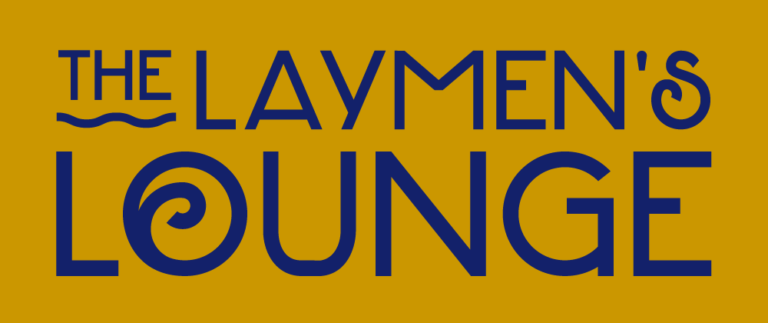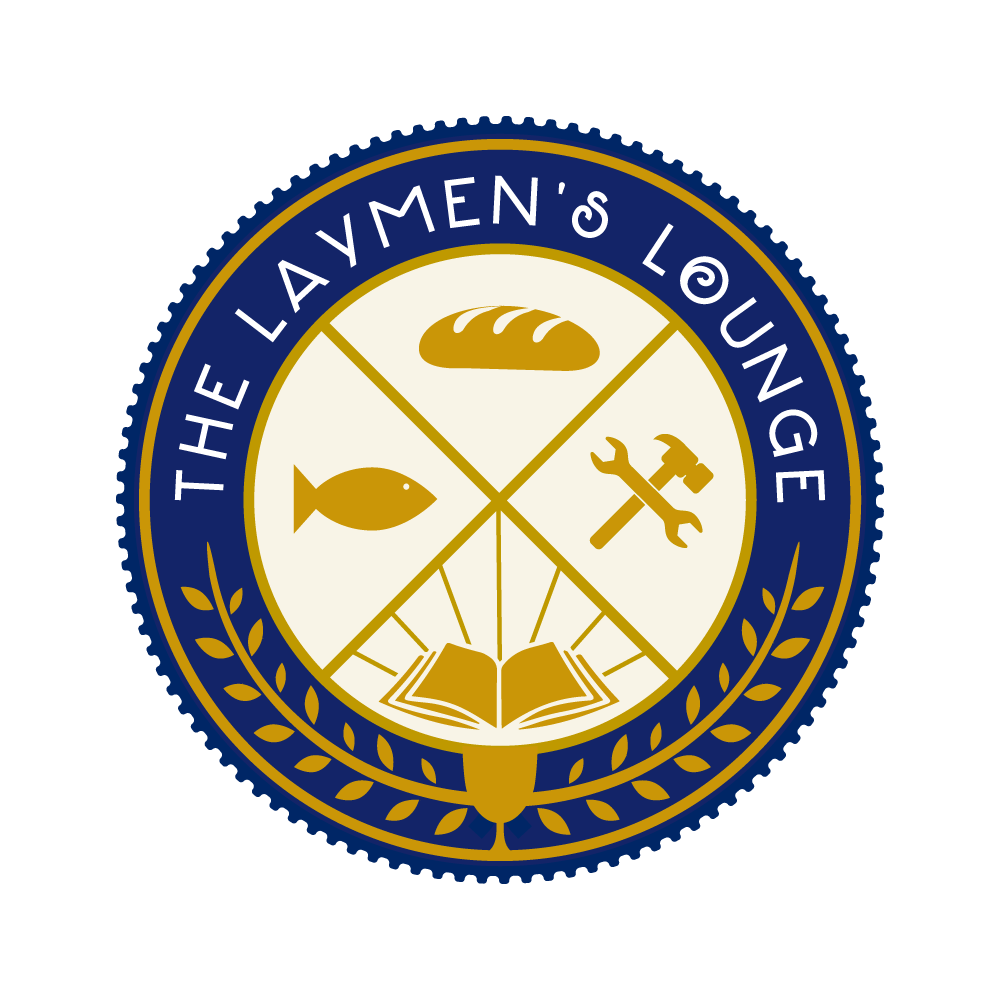by Steve Bishop
D. H. Th. Vollenhoven (1892-1978) was the brother -in-law of Herman Dooyeweerd (1894-1977) and together they developed a neo-Calvinist philosophy. This philosophy been described by different terms including the following:
- Amsterdam philosophy
- Scriptural philosophy
- Reformational philosophy
- Calvinist philosophy
- Christian philosophy
- Philosophy of Law Idea
- Cosmonomic philosophy

The starting point of this philosophy was in the creator rather than in the creation. It starts from the sovereignty of God rather than reason, thought, logic, observation, common sense or any other created aspect.
Vollenhoven was a contemporary of Dooyeweerd at the Free University (from 1911-1914). He studied classics, philosophy and theology. His professors were J. Wolter, G.H.J.W.J. Geesink and Herman Bavinck and H.H. Kuyper (Abraham’s son). Vollenhoven’s doctoral dissertation was completed in 1918. His thesis was on the ‘Philosophy of mathematics from a theistic point of view’ and supervised by Wolter and then Geesink after Wolter’s death. On graduation, he married Hermina Maria Dooyeweerd (1892-1973), Herman’s elder sister in 1918 and became a pastor in the Gereformeerde Kerk in Oostkappelle from 1918.
In 1921 he became a pastor in The Hague and had many discussions with Dooyeweerd. Vollenhoven then went on to become a professor of Philosophy at the Free University in Amsterdam (VU) from 1926. There he was continually developing an approach to the history of philosophy that became known as the Consistent Problem-Historical Method (CPHM).
In 1933 he published Calvinism and the Reformation of Philosophy and in 1935 Vollenhoven and Dooyeweerd set up the Vereniging voor Calvinistische Wijsbegeerte (VCW) (Association of Calvinistic Philosophy – now called the Foundation for Christian Philosophy). Vollenhoven was the chair (a post he held until 1961) and Dooyeweerd the editor-in-chief of the organisation’s journal Philosophia Reformata.
There were several shifts in Vollehoven’s thinking during this time. One key shift that bought him into conflict with members of the theological faculty at the Free University was over the nature of humanity. In this Vollenhoven was influenced by discussions with Antheunis Janse (1890-1960). Vollenhoven came to see the whole person is the image of God – the unity of humans is located in the heart. Also, he came to see the idea that immortality belongs only to God. The Christian hope lies not in the immortality of the soul but in the work of Christ. Hence, our hope is not in a disembodied existence but in the redemption of the whole person body and soul. This approach differed from Reformed Scholasticism that dominated the theological faculty at the Free University during this time.
Consequently, in 1937-1939 charges were brought against Vollenhoven and Dooyeweerd by Valentijn Hepp (1879-1950), Bavinck’s successor at the Free University– the complaint was examined by the curators of the VU. The charge was that Vollenhoven and Dooyeweerd did not hold to Reformed Scholasticism. In that, as well as rejecting the immortality of the soul, they rejected a nature/ grace dualism. Hendrick Steen wrote Philosophia Deformata (1937) in an attack on Vollenhoven and Dooyeweerd. Steen claimed, among other things, that a Christian philosophy was not possible. Unfortunately, the invasion of the Netherlands by the Nazis mean that the issue was unresolved by the curators of the VU.
In 1950 Vollenhoven published the first volume of what he intended to a ten-volume history of Western philosophy. Unfortunately, it was met with many negative criticisms – primarily because his system was so complicated and most of the reviewers were unable to understand it. This volume on Greek philosophy was translated into English by H. Evan Runner of Calvin College. Disheartened by the response Vollenhoven then concentrated on his systematic analysis of philosophers. The fruit of this work can be seen in his complicated charts – all 52 of them – in his Schematische Kaarten edited by Kor Bril and P.J. Boonstra and published posthumously in 2000 on behalf of the Vollenhoven Foundation.
He retired as a professor in 1963 but continued developing his analysis of philosophers in private sessions with numerous students and assistants (these were Sander Griffioen, up to 1970; Anthony Tol 1970-1975; and John Kok from 1975).
Vollenhoven died on 6 June 1978. Since his death much of his work has been promoted by the Vollenhoven Foundation. Numerous Christian scholars have utilised his approach. These include:
- Pete Steen (1935-1984)
- K.J.Popma (1903-1986)
- Gordon J. Spykman (1926-1993)
- J.A.L. Taljaard (1915-1994)
- H. Evan Runner (1916-2002)
- N.T. van der Merwe (1932-2004)
- Anthony Tol (1943-2014)
- John Kok (1948-2020)
- John C. Vander Stelt (1943-2021)
- Kor Brill
- Calvin Seerveld
- Robert Sweetman
- Harry Van Belle
- B.J. van der Walt
- J.J. (Ponti) Venter
Vollenhoven’s method
Vollenhoven described his method as the consequential problem-historical method (CPHM). His approach was modified and changed over the years – it developed as he studied the history of philosophy.
Vollenhoven identified periods, trends and types as a way to categorise and understand different philosophers and philosophical schools.
Periods – this is determined by the response to scripture
Trends – this is determined bythe view of law
Types – this is determined by the view of the cosmos

Periods
Vollenhoven identified three main periods, based on their attitude to the word of God. These were
Pre-synthetic -Greek and Roman (c. 2500 BC – 100 AD). In this period the Scriptures were not known at all.
During this period we have philosophers such as Plato, Aristotle, Hellenistic philosophy, and neo-Platonism.
Synthetic – the period of the Church fathers and Middle Ages (c.100-1500 AD). In this period the scriptures were known but were mixed (synthesised) with non-Christian thought and approaches. For example, Aquinas mixed Aristotle’s philosophy with Christian thought.
During this period, we have Gnosticism and Scholasticism.
Post- or Anti-synthetic – modern philosophy (1550 onwards)
In this period, he identified two divisions. Those on the Left who broke with the Scriptures; and those on the Right who kept in mind the word of God
On the left we have rationalism and Irrationalism.
On the right neo-Calvinism.
Within these three main periods he identifies over 60 different sub-divisions.
Trends/ time currents
Trends/ time currents focus on some important problems in philosophy. Problems such as the foundations of human knowledge and the place of law.
- Where did you seek and find direction?
- How is what is right or wrong, true or false, ugly or beautiful determined?
- Is it inside or outside of creation?
Vollenhoven identifies three main responses: subjectivist, objectivist, realist. The subjectivists and the objectivists see the answer lying within creation. Realists see it outside of creation.
Subjectivists – seek the answers in some part of, or inside, creation. Some part of creation became its own law, absolutized (often accompanied by individualism, relativism and pragmatism). Each individual determines it for themselves.
The Sophists were subjectivists. Contemporary versions are this view are rationalism and irrationalism.
Objectivists – on the other hand although seeking the answer in part of creation and focus on the qualities of concrete things (for example, size, smells, colour, sounds). The Pythagoreans were objectivists as they took number to be independent entities. Other examples, are Anaximander (610-546 BC) and Socrates (470-399 BC).
Realists – the law is something that exists outside of the cosmos. This was the view of Plato among others.
Types
Types are concerned with primarily ontological questions – questions about the nature of reality (the vertical structure of things). They are often traditions of thought. Typical problems are:
- What is reality?
- Where does reality come from?
- What did it look like originally?
- What is the relationship between the universal and the individual?
- Where do we come from?
- Do we consist of body and soul?
- What is our destiny?
- How do we attain knowledge?
- What is the relationship between humans and animals?
As regards the origins of reality he identifies three main categories – each having a different perspective on the origins of the universe.
- Mythologising (of which he identifies 18 different types) – in this category God or gods are the origin of the universe; this group has one form or another of creation accounts.
The next two groups have no creation stories or myths:
- Cosmogono-cosmological (39 different types identified) – this group see the universe is an unfolding process.
- Purely cosmological (30 different types) – where the universe is seen in terms of timeless order.
These three groups can then be split into either monistic or dualistic categories. The monists regard the universe as consisting of one thing (e.g., only mind or only matter), the dualists see it made of two different things. The issue for the dualists is how do these two things interrelate.
Examples of those taking these positions are shown in the table below.

Comparisons with Dooyeweerd
Both Vollenhoven and Dooyeweerd studied at, and were professors at, the Free University in Amsterdam. Both were influenced by Abraham Kuyper. Both were key in developing a distinctly Christian philosophy. Both were involved with the VCW. Both worked from a Eurocentric Western position. Both had a neo-Kantian background, and both rejected neo-Kantianism. They had many approaches/ concerns in common. These included:
- A Calvinist theology and outlook
- A rejection of the autonomy of theoretical thought
- A distinctively Christian approach to scholarship was possible
- A distinctly Christian approach to scholarship is necessary
- The theory of modal aspects
- The importance of the distinction between God and creation
Over the years their approaches diverged somewhat. These were not major differences; the differences were more in terms of emphasis rather than disagreements. Some differences were clarified in a Divergence Report dated around 1953. The main differences were over the nature of law and over the supratemporal heart.
- Vollenhoven had a triad of God-law- cosmos; Dooyeweerd a law-side and a subject-side.
- Vollenhoven sees the law within the cosmos “in the sense of regularity”; Dooyeweerd distinguishes between a divine law and human law.
- Dooyeweerd regards the heart to be supratemporal, Vollenhoven did not.
Despite these differences their approaches are complementary, and they held more in common than they did differences. Vollenhoven, for example, was more focused on the development and history of philosophy than Dooyeweerd.
In conclusion listen to what H. Evan Runner had to say of Vollenhoven:
“One of the most striking things about Vollenhoven is that he is aware of all the complexities going on his analyses; yet he can bring them all together and at the end one can understand how very simple his vision is. It is simple enough for an uneducated child of God to understand, yet you can discuss the most complex philosophical matters with him. He is a very remarkable person. I have never been around a man that has struck me so——he really lives by faith. I don’t think I have ever experienced anyone quite like him.”
Perspective Newsletter (Dec 1972), p.10.
Further reading
Works by Vollenhoven
Vollenhoven, D.H.Th. 2005. The Problem-Historical Method and the History of Philosophy Kornelis A. Bril (ed.). Amstelveen: De Zaak Haes.
Vollenhoven, D.H.Th. 2005. Introduction to Philosophy. Kok, J.H. And Tol, A. (ed.) Sioux Center: Dordt Press.
Vollenhoven, D.H.Th. Serious or playful: a meditation. Pro Rege 45(1):13 – 17. https://digitalcollections.dordt.edu/pro_rege/vol45/iss1/2
Introductions
Bril, K.A. 2005. Vollenhoven’s Problem-Historical Method: Introduction and Explorations. Sioux Center, Iowa: Dordt Press.
Van der Walt, B.J. 2006. The philosophy of D. H. Th. Vollenhoven (1892-1978), with special reference to his historiography of philosophy. Tydskrif vir Christelike Wetenskap 42(1-2): 35-39. Also in Bishop, Steve (ed.) 2011. Like the First Gleam of Dawn: Reformational Studies – a Bennie van der Walt Reader. Potchefstroom, South Africa: ICCA., ch. 12.
Kok, John 1998. Patterns of the Western Mind. Sioux Center: Dordt College Press.
Going deeper
Ive, J. 2015. The contribution and philosophical development of the Reformational philosopher, Dirk H. Th. Vollenhoven. Philosophia Reformata 80(2): 159–177.
Kok, J.H. 1992. Vollenhoven and thinking in the light of Scripture. Pro Rege XXI:11-23.
Kok, J.H. 1992. Vollenhoven: His Early Development. Sioux Center, Iowa: Dordt Press.
Brill, K A. 1995. A Comparison between Dooyeweerd and Vollenhoven on the historiography of philosophy. Philosophia Reformata 60(2): 121-146.
Friesen, Glenn 2005. Monism, dualism, nondualism: a problem with Vollenhoven’s problem-historical method. https://jgfriesen.files.wordpress.com/2016/12/method.pdf
Seerveld, Calvin. 1973. Biblical wisdom underneath Vollenhoven’s categories for philosophical historiography. Philosophia Reformata 38(1): 127-143. Also in Seerveld, Calvin 2014 Art History Revisited. Kok, John (ed.). Sioux Center: Dordt Press, ch. 1.
Seerveld, Calvin. 1993. Vollenhoven’s legacy for art historiography. Philosophia Reformata 58(1): 49-79. Also in Seerveld, Calvin 2014 Art History Revisited. Kok, John (ed.). Sioux Center: Dordt Press, ch. 2.
Strauss, D.F.M. 2006. Appropriating the legacy of Dooyeweerd and Vollenhoven. Journal for Christian Scholarship, 2006, 42(4):23-56.
Tol, Anthony 2010. Philosophy in the Making: D.H. Th. Vollenhoven and the Emergence of Reformed Philosophy. Sioux Center: Dordt Press.
Van Belle, Harry Explorations in the History of Psychology: Persisiting Themata and Changing Paradigms. Sioux Center: Dordt Press.
Van der Walt, B.J. 2014. Constancy and Change: Historical Types and Trends in The Passion of The Western Mind. Potchefstroom: ICCA.
Wolters, A.M. 1979. On Vollenhoven’s problem-historical method. In Kraay, J. & Tol, A. (eds.). Hearing and Doing: Philosophical Essays Dedicated to H. Evan Runner. Toronto: Wedge Pub. Foundation, 231-262.
Further resources are available on the Vollenhoven pages: https://www.allofliferedeemed.co.uk/vollenhoven.htm

Steve Bishop is an independent researcher based in Wales, UK. He maintains the neo-Calvinist website www.allofliferedeemed.co.uk. He is a trustee of Thinking Faith Network. He earned his doctorate at the North-West University, Potchefstroom, South Africa (2019), supervised by Renato Coletto. He is the co-editor of On Kuyper: A Collection of Readings on the Life, Work & Legacy of Abraham Kuyper (Dordt Press, 2013). He has had articles on Kuyperian neo-Calvinism published in Foundations, Koers, Pro Rege, and the Journal for Christian Scholarship. He blogs here and you can follow him on Twitter


